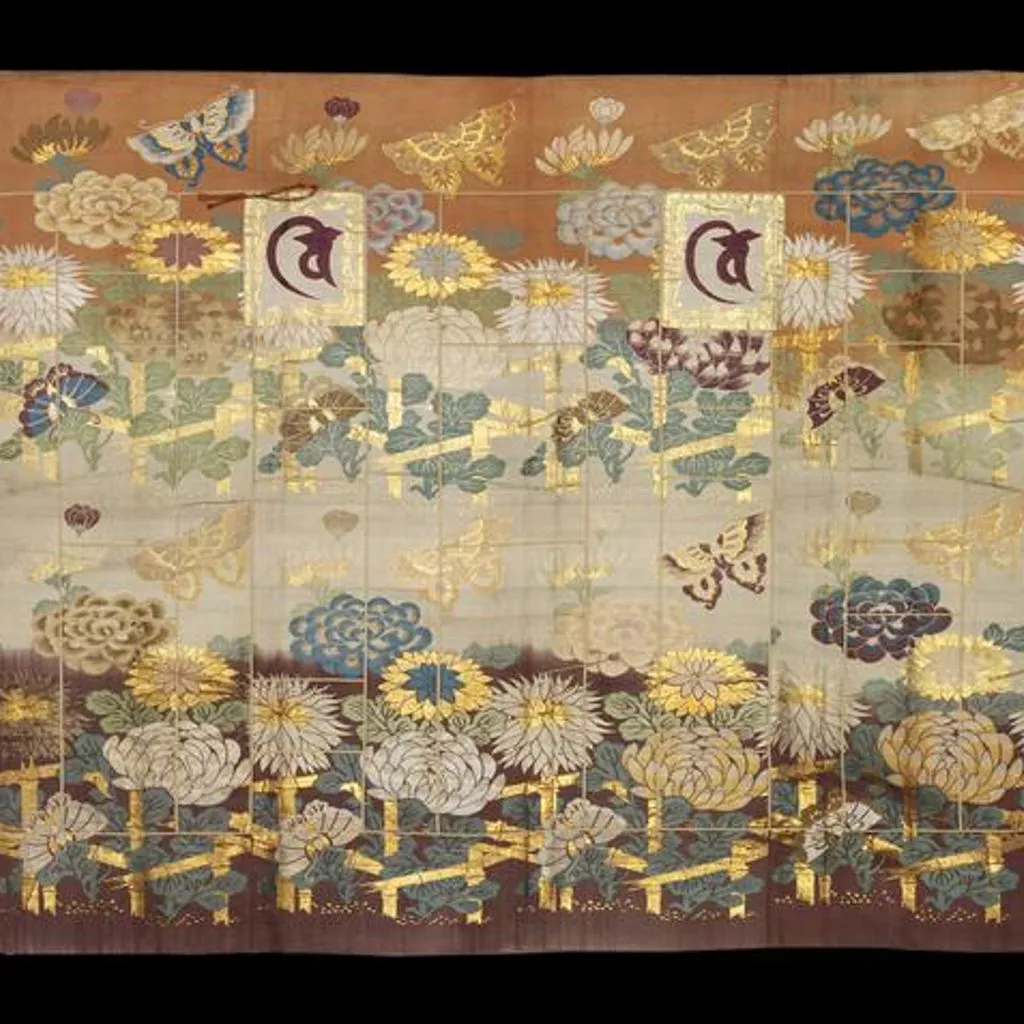Description
Kesa (Buddhist priest's mantle), polychrome figured silk and silk cord with decoration of butterflies and flowers by a fence, with six patches bearing characters, probably Kyoto, Japan, 1800-1850
Buddhist priest's robe (kesa) with design of butterflies, chrysanthemums and peonies by a fence. The ground is woven with selectively resist-dyed threads, and the pattern is produced with supplementary wefts of silk and gilt paper strips (kinran). Silk cord has been used to mark divisions on the surface and there are six patches with characters derived from sanskit text.
This textile is a ‘kesa’, a rectangular garment worn by Japanese Buddhist priests. Kesa are normally made of a sewn patchwork of cloth, the arrangement of the sections of fabric into columns surrounded by a border serving as a mandala, a symbolic rendering of the universe. This is an example of a pictorial kesa. It has an elegant design of butterflies and flowers, the changing ground colour being achieved through the resist-dyeing of the warp threads. The fabric used here was not cut up into individual pieces. Instead, lengths were sewn side by side and silk cord was then sewn onto the surface to represent the traditional patchwork divisions. There are six additional squares of fabric sewn on to the surface,which feature characters from Siddham, a script used for writing Sanskrit from about 500-1200. The characters, known as shittan or bonji, continued to be an important part of Buddhist iconography, and some Japanese sects still use the Siddham script for the writing of mantras and copying of sutras.






